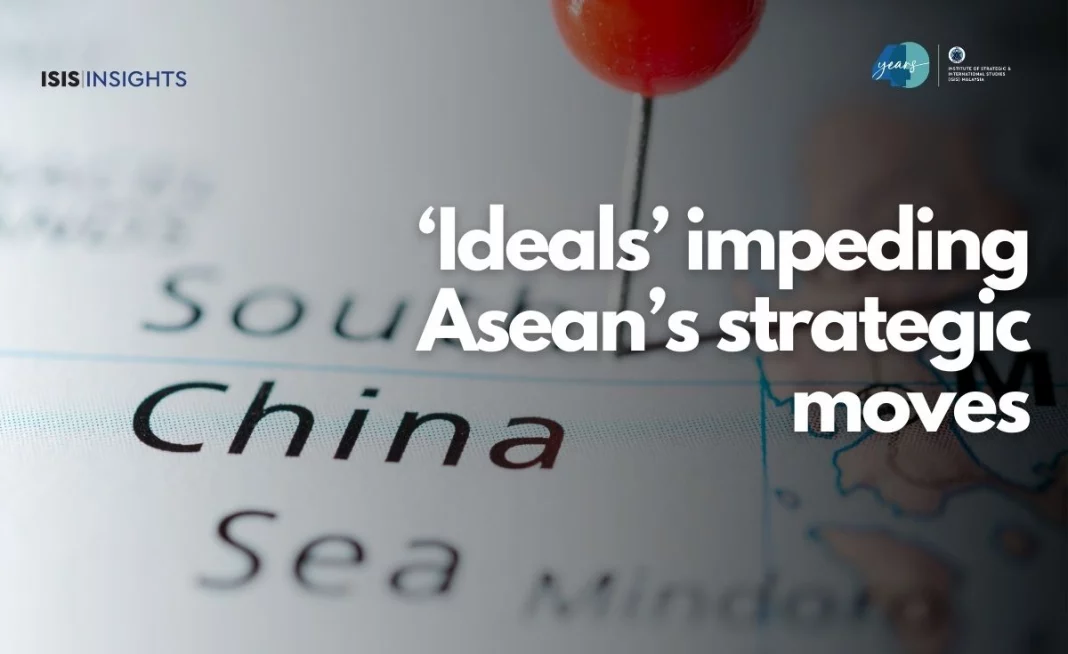Sino-American rivalry, competing Indo-Pacific outlooks add to bloc’s inability to sort out priorities
Asean has always touted its spirit of cooperation and dialogue yet Southeast Asia’s track record on defence cooperation can be best described as “spotty”.
The region did embark on peacetime cooperation but historical baggage, diverging interests of the member states and institutional limitations have prevented cooperation on major, and at times controversial, concerns affecting the region.
The situation is further complicated by the growing number of Indo-Pacific strategies of extra-regional parties. With such competing concerns, it will become increasingly difficult for Asean to manage itself, partners and other regional actors in an increasingly complicated strategic environment.
Historically speaking, Southeast Asia has embarked on strategic cooperation but it developed more slowly compared to its economic, diplomatic and social counterparts as a majority of region was not prepared or willing to act collectively on broader strategic matters.
Since the 1950s, much of the defence cooperation in Southeast Asia remained at the bilateral level, while multilateral examples had either failed, such as Southeast Asia Treaty Organisation (SEATO), or persisted, like the Five-Power Defence Arrangements (FPDA).
Asean’s evolution as an institution should have allowed for deeper collaboration. It operated on the optimistic assumption that a working history and rapport among members will build confidence to broach more sensitive and difficult matters over time.
Examples included platforms, such as the Asean Defence Ministers’ Meeting (ADMM) and the Asean Regional Forum (ARF). The former was a product of a pledge brought by the then named Security Community Plan of Action, which led to ADMM and its expanded grouping with Asean Dialogue Partners in the ADMM Plus.
It was an achievement formalising multilateral defence diplomacy in a region that saw collaborative efforts across both traditional and non-traditional security threats. The latter acted as a network of multilateral security interactions between Southeast Asia and other stakeholders to identify and tackle common security interests.
However, extra-regional factors continue to complicate the development of more meaningful defence cooperation. From the outset, the most prevalent issue is the geopolitical rivalry between the United States and China.
While there are benefits joining the bandwagon, Southeast Asia remains mostly unwilling to risk choosing one over the other. Such concerns saw hedging and balancing strategies becoming the go-to approach, especially managing the Sino-American rivalry.
However, this has caused ongoing confusion and reluctance to commit to strategic partnerships because of the sensitivity arising from a state’s individual relationship with either power.
Even with concerns about China’s increasingly assertive behaviour or doubts about American commitment to the region, there is also reluctance to support any Indo-Pacific concept over commitment fears.
There has been a proliferation of such strategies, ranging from the US, Japan, India, the European Union and even Canada, which highlight Southeast Asia’s position in these calculations. While not all strategies are equally impactful, the growing number of actors highlights that the attention will increase the uncertainty around Asean’s own ability to manage them.
This was reflected in the Outlook on the Indo-Pacific (AOIP) strategy, which focused on reaffirming long-standing norms, such as Asean centrality, encouraging dialogue and cooperation to forward development and prosperity.
However, the move was neither innovative nor substantive. Even with these plans, Asean remains limited by its own institutional and political will, a recurring criticism of its moribund outlook.
Asean has been unable to manage the competitive dynamics of extra-regional parties or the diverging national interests of it is member states without jeopardising its central role of managing regional affairs. This is exacerbated by the lack of institutional guarantees to follow through implementing and enforcing its decisions.
Given ongoing developments, and without a shared, common understanding of what Asean’s member states wish to do, the ad hoc arrangements and avoidance of traditional security threats will remain a source of frustration for itself and its partners.
The lack of commitment can set a negative precedence, adding to the criticism as it struggles with responding to ongoing changes. It remains to be seen if the region will be able to change or end up shooting itself in the foot.





